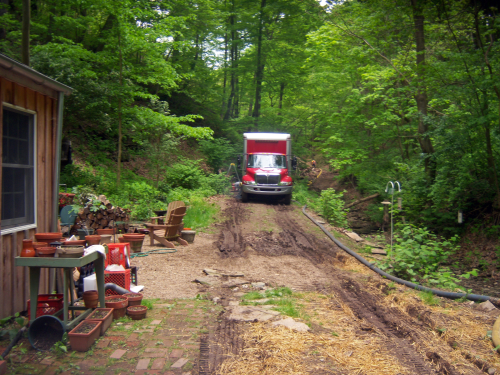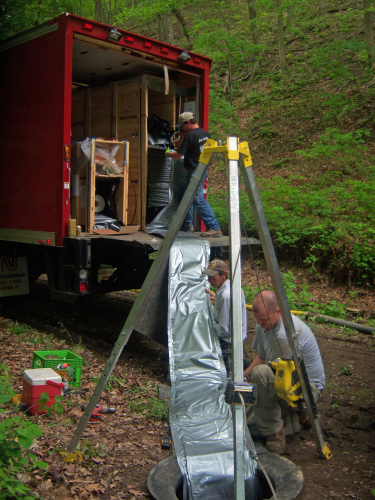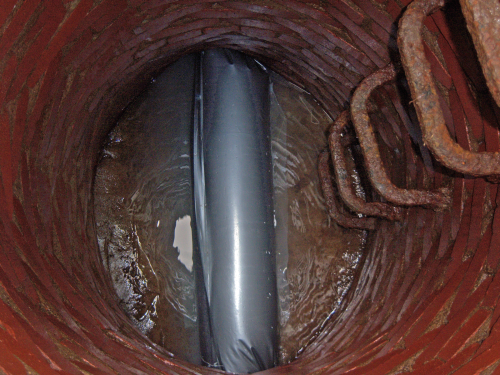


With nearly 200 m of 25 cm diameter clay sewer line showing signs of age and wear, water that should naturally flow through a nearby creek was entering the pipe through cracks and failing joints. Leaving the creek bed dry, the extra water in the pipe reduced its capacity to carry wastewater and added to the workload of the treatment plant.
Faced with the problems of the historic nature of the property and its physical location, the Reline America Inc® technology installed by Abel Recon also restored natural water flow to the creek that runs past the historic building. A Vipel® UV-cure resin system was formulated specifically for the needs of the project by AOC.
Designed by Gateway Engineering Inc for the Municipality of Penn Hills, engineers designed a solution that specified a cured-in-place-pipe (CIPP) inside the existing pipe to eliminate trenches, which would otherwise add costs, create delays and threaten the structural integrity of the property.
Abel Recon installed the new CIPP using Reline America’s Blue-Tek® technology.
“The infiltration and inflow problem at the Penn Hills site was so severe that the pipe still had 7-10% flow even after the by-pass was installed,” says Pat Godwin, Business Development Manager for Abel Recon .”Blue-Tek technology starts with a slip sheet that protects the resin-impregnated liner as the liner is winched into place.” The liner was custom-made for the project in Reline America’s certified facility. Because UV-cure resin is not affected by temperature, the liner was shipped without incurring costs of refrigeration. At the job site, the liner was pulled instead of inverted as is the case with most conventional CIPP. The Blue-Tek liner was then inflated, and a UV light 'train' was introduced into the liner to initiate resin cure. A traditional cure would have taken two to three hours and would release styrene. The Penn Hills project cured at three to five feet per minute with no styrene release.
The material for Blue-Tek liner is made of spirally-wound glass fibre. The finished product is a reinforced composite that is half as thick and at least four times stronger than a conventional felt-based liner.




